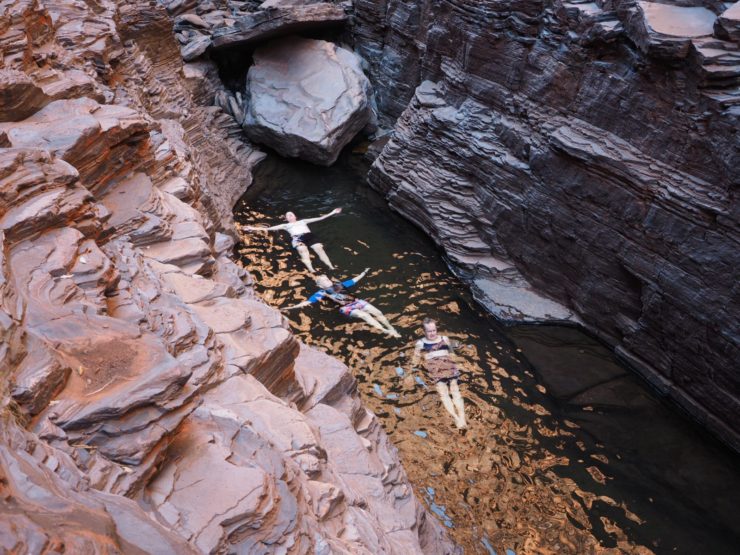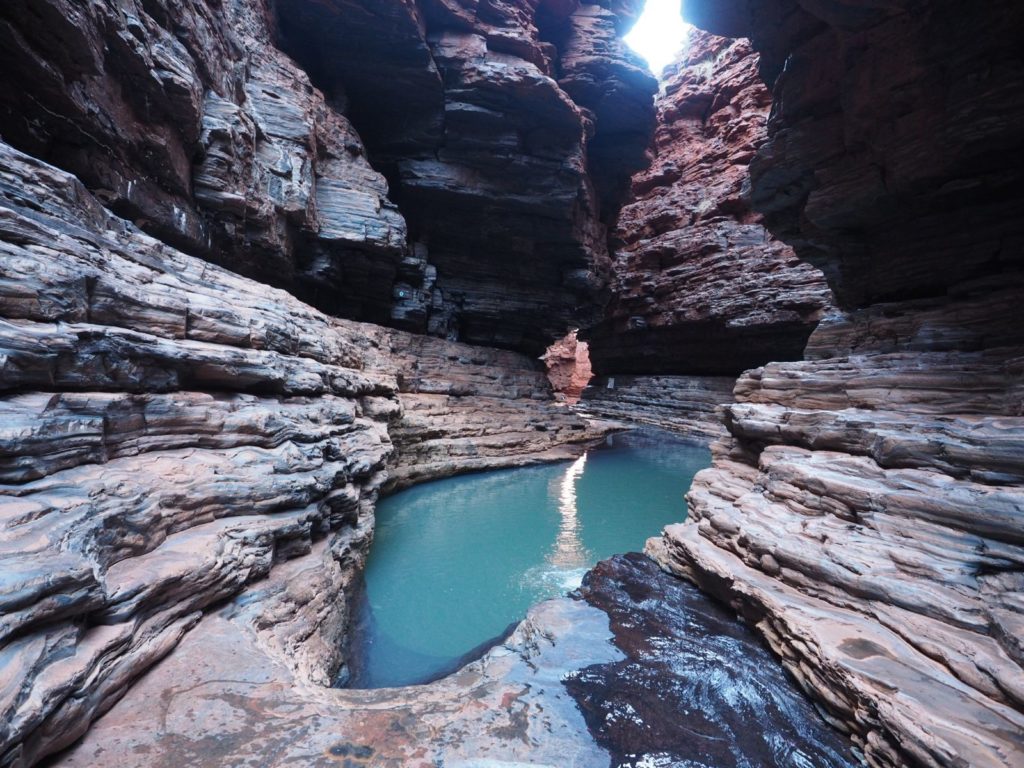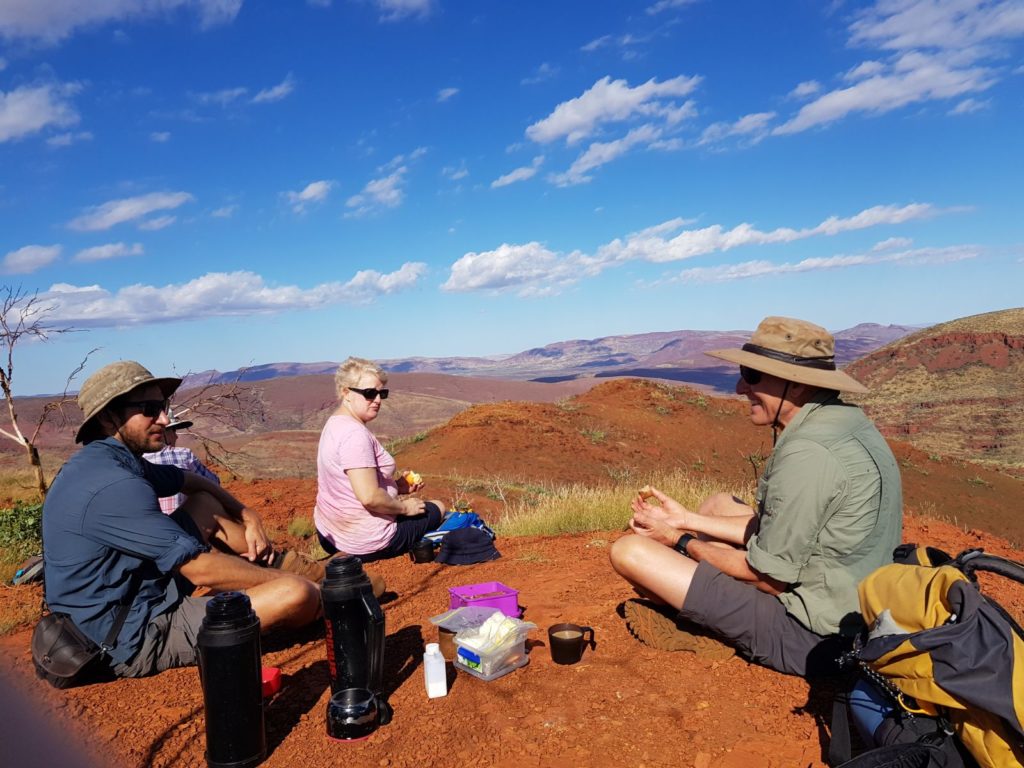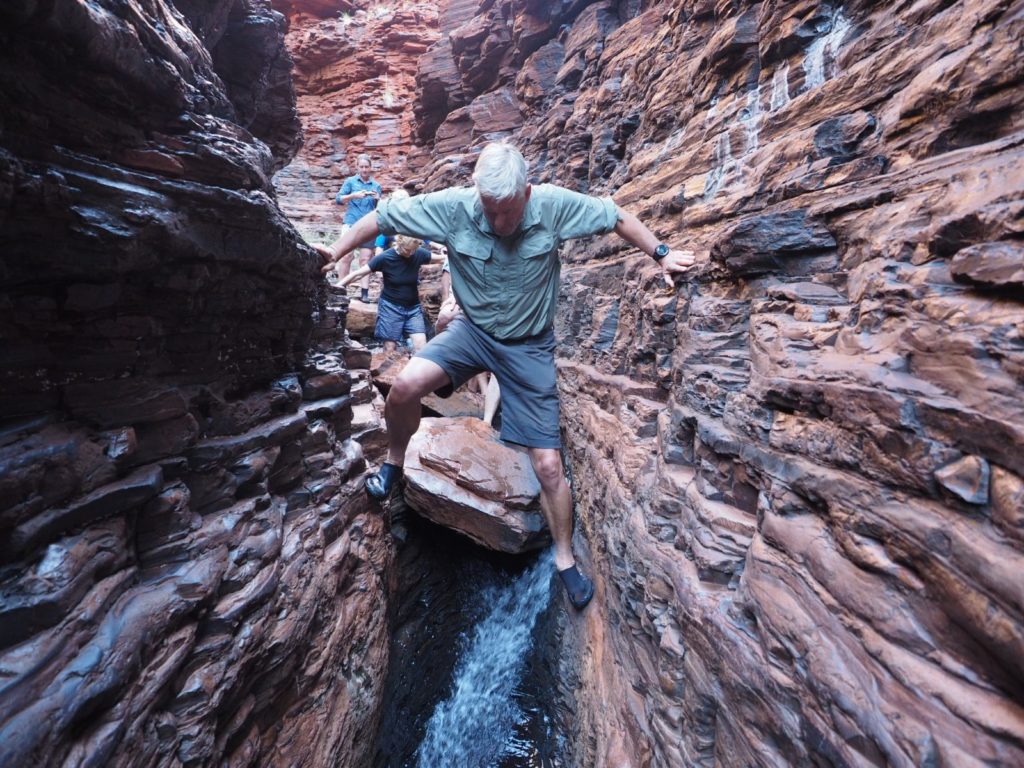5 things to know before you go to Karijini National Park

5 things to know before you go to Karijini National Park
Posted on
It’s hard to imagine a national park in Australia that is more spectacular than Karijini. The precipitous gorges, sublime swimming holes and vivid outback colours strike wonder in all who are lucky enough to venture to this remote part of the country. It can be a harsh place though, with dangerous terrain, an extreme climate and the remoteness of the true Australian outback. It’s not a place to be taken lightly so there are a few things to know that will help you be better prepared for this jewel in Western Australia’s crown.

- It can be very hot… and very cold!
We all know that outback Australia can get really hot. In fact the town of Marble Bar which is not too far from Karijini is regarded as the hottest town in Australia, averaging the most days per year over 40 degrees. What a lot of people underestimate though is how cold it can get. On clear nights in winter, the temperature can plunge towards zero and catch unwary visitors off guard. It’s not just the nights that can be cold, but the gorges too. Most of the gorges in Karijini are quite narrow, so they don’t see much sunlight. This means the swimming holes become like icy baths, and there is no sunlight to warm you up after a swim.
This contrast between hot and cold can be quite extreme. Outside of the gorges, the temperatures can be blistering hot, but once you descend to their depths, it can feel like you’ve stepped into a cool room.
Luckily, the seasons in Karijini are quite distinctive, so you can have a pretty good idea of what to expect before you go.
November – March
During this period, it will be extremely hot! November is the start of the build up to the wet season so temperatures soar, and the humidity floods back into the air. Monsoonal storms provide some relief, but it’s not typically a comfortable time of year to be in the park. The only good side is that the swimming holes are at a lovely temperature so can provide a little bit of relief form the searing heat.
April – May
My favourite time to visit Karijini. It’s a transitional time when the severe heat starts to subside and the humidity starts to leave the air. The day time temperatures become more manageable, but it’s still warm enough to enjoy swimming in the gorge pools which are a perfect temperature. The nights are usually still comfortable, but as you get into May, a chill can creep into the air. Don’t be too complacent about the heat though, as it can still be very hot, especially in April, so it’s important to carry of plenty of water on the more exposed hikes like Mt Bruce.
It’s not uncommon to get a late wet season storm come through during this time too. It’s important to be vigilant when there is rain in the area as flash flooding can be a real danger once down in the narrow gorges.
June – August
This is when it can get cold! The heart of the dry season brings comfortable day time temperatures, but the nights can get frighteningly cold. You’ll need a warm sleeping bag and a good jacket at this time of year. I always take my thermals too. The gorges will also feel quite chilly, especially if you decide to brave the icy water for a swim. The good news is, it’s the best time of year for the more exposed hikes like Mt Bruce.
September – October
The heat starts to come back into the air around September, so the nights become more manageable and it’s possible to enjoy those refreshing swims again. By October, it does get hot again though, so not the best time of year if you don’t like the heat. The landscape can look pretty dry as well, as there’s usually very little rain, if any at all for several months before.
Personally, the only times of year that I would choose to visit Karijini are between April and September. Whilst it’s still a wonderful place at any time year, the extreme conditions can make it pretty unbearable outside of that period.
2. It’s dusty!
A word of warning, leave your white clothes at home! The red dirt of Karijini has a habit of getting into places you didn’t think possible and you will most likely leave with what is affectionately known as a ‘Pindan Tan’. There is not much you can do about this, except embrace it, be one with the dirt and let the outback sink into your pores.

3. It’s really far away
When you’re in Karijini, you are literally in the middle of nowhere. It’s about 1400km from Perth, and the nearest town of Tom Price (80km away) has a population of only 3,000. It’s remote, so you need to be prepared.
There are 2 areas where you can stay in the park, the national park campground and the Karijini Eco retreat. The national park camp ground at Dale’s Gorge has very basic facilities whereas the Eco Retreat has permanent eco-tents, as well as unpowered camping sites with access to showers. Besides the restaurant at the retreat, there is no where to buy food or fuel so you’ll need to buy everything you need beforehand. There is access to drinking water in some parts of the park but you should still bring plenty in reserve.
A lot of the roads within the park are now sealed but there are still some dirt roads that you are likely to drive on. Flat tyres are common so make sure you have a spare and know how to change it!
Phone coverage is very limited, but 4G OPTUS towers have been installed in the National Park at 3 locations, the Karijini Eco Retreat, Karijini Visitors Centre and Dales Gorge Campgrounds. Mt Bruce also has good Telstra reception.

4. The flies might test your patience
I’m not gonna lie, the flies here can be plentiful. Whilst they are at their worst in the summer months, they can linger through the cooler times of year as well. I’m not typically one for fly nets, but there has been times in Karijini when there wasn’t any other choice in order to maintain my sanity.
5. The walks are not long but can be challenging
Most of the walks in Karijini are in and out of gorges so not particularly long distances. They are however on mostly rocky terrain, so do require a decent amount of agility and balance, rather than cardiovascular fitness. There are also streams to cross, slippery rocks and the odd wade through water so sandals that can get wet are a must. It’s a test for the ankle and knees, so hiking poles can be really handy for the tricky terrain.
There are some narrow ledges that need to be negotiated in some of the gorges and on Mt Bruce, so not the best for people with a fear of heights. Luckily though, all of the walks come back on the same track so you can always stop at a point when you no longer feel comfortable to continue.

It is a place where if you are not careful, there can be serious consequences. Some of the gorges have clear signage about where you should not pass, so all warnings should be taken seriously. Several people a year need to be extracted with injuries from parts of gorges that they shouldn’t have been in, so know your ability and stick to what you’re comfortable with.
Karijini is an amazing part of Australia that everyone should visit in their lifetime. With a little preparation and planning, this harsh environment can be enjoyed to it’s fullest and provide an outback experience that will linger long in the memory.
Just don’t forget that fly net….
Adam – IO Guide



